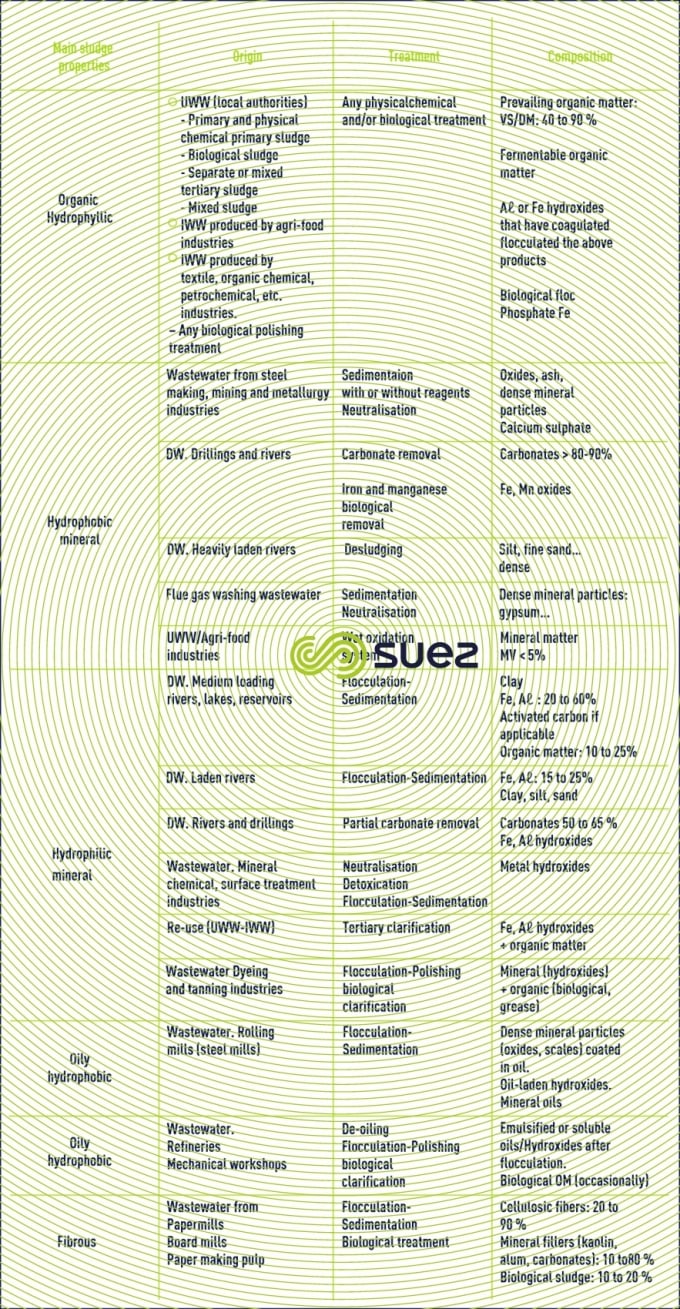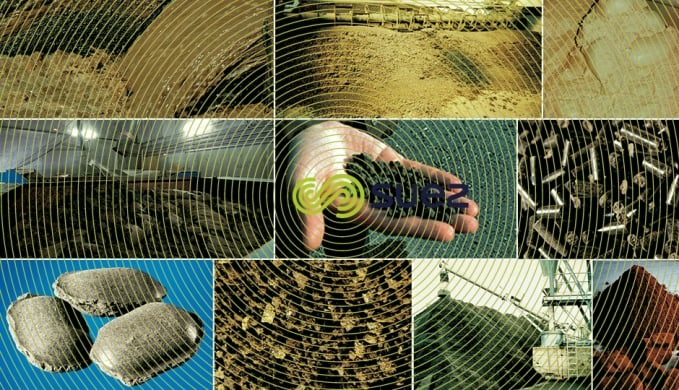sludge characterisation/classification
Reading time:Establishing sludge properties is a fundamental requirement when selecting the treatment method that can be applied to that sludge and when forecasting the efficiency of the machines to be used. Table 71 puts forward a classification of the different types of sludge according to their origin and their composition.






This classification is based on two major properties:
- organic or mineral sludge nature: it will usually require organic matter stabilisation or a final heat oxidation stage;
- hydrophilic or hydrophobic sludge nature: when suspended solids are closely bound to the water and, therefore, hydrophilic, this will make sludge dewatering all the more difficult.
This composition depends on both the nature of the original water pollution and on the purification processes undergone by this water : physical, physical-chemical, biological treatments.
organic-hydrophilic category
This is one of the most extensive categories. This type of sludge is difficult to dewater because it contains a significant proportion of hydrophilic colloids. This category includes all sludge produced from wastewater biological treatment and where the volatile matter content can reach 90% of total dry solids content (agri-food and organic chemical industry wastewater for instance).
mineral-hydrophilic category
This sludge contains metal hydroxides that are formed during physical-chemical precipitation processes of the metal ions (Aℓ, Fe, Zn, Cr) present in the water to be treated.
oily category
TThis category can be identified by the presence in effluents, albeit in small quantities, of oils or mineral (or animal) grease. These oils are found as emulsions or adsorbed over hydrophilic or hydrophobic sludge particles, especially over biological floc (e.g. processing wastewater from refineries).
mineral-hydrophobic category
This sludge is characterised by a preponderant level of particulate matter containing low levels of associated water (sand, silt, slag, scales, crystallised salts…), typical of drinking water presedimentation treatment or of sludge produced by some IWW primary treatment systems.
mineral-hydrophylic-hydrophobic category
This category of sludge primarily includes hydrophobic matter that incorporates sufficient hydrophilic matter ensuring the predominance of the latter’s adverse effect during dewatering. Hydrophillic matter frequently consist in metal hydroxides that are caused by the precipitation of mineral coagulants (Fe and Aℓ salts).
fibrous category
This category of sludge is usually easy to dewater except when thorough recovery of the fibres causes this category to become more hydrophillic due to the presence of hydroxides or biological sludge.
Most systems will be called upon to treat a mixture of sludges. Therefore, whenever this type of system is designed an evaluation of the various co-presence mass ratios will be required: organic/mineral ratio and hydrophillic/hydrophobic ratio.
Bookmark tool
Click on the bookmark tool, highlight the last read paragraph to continue your reading later












